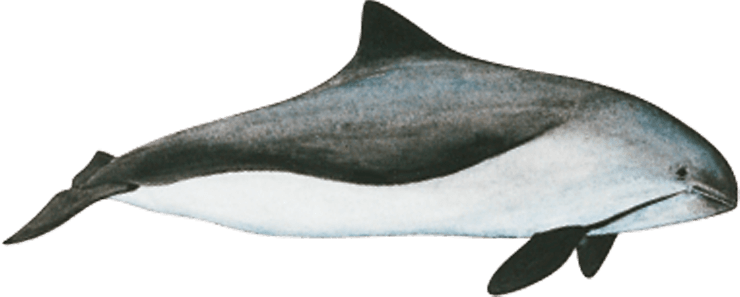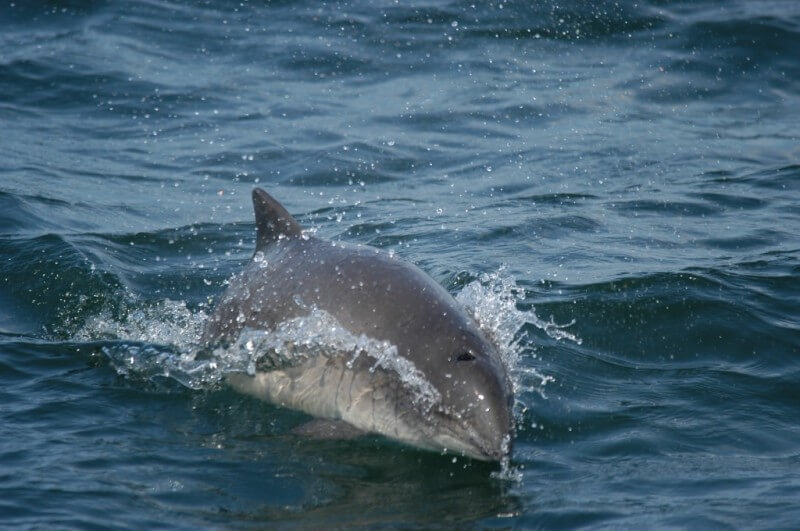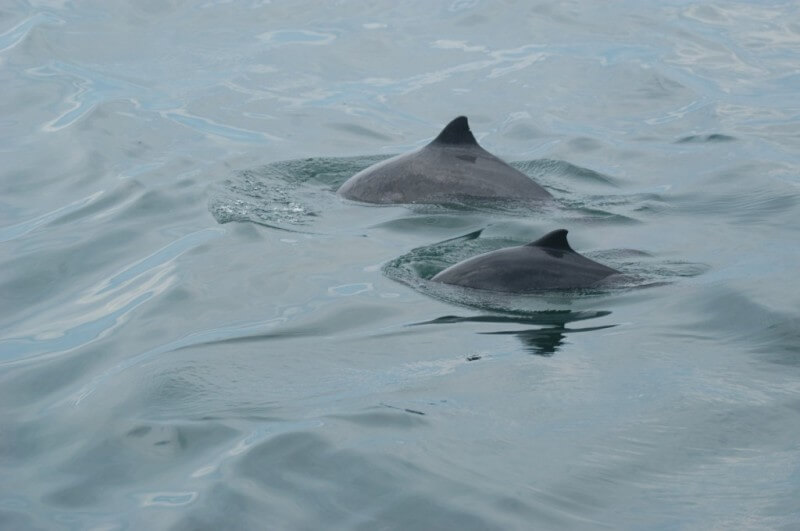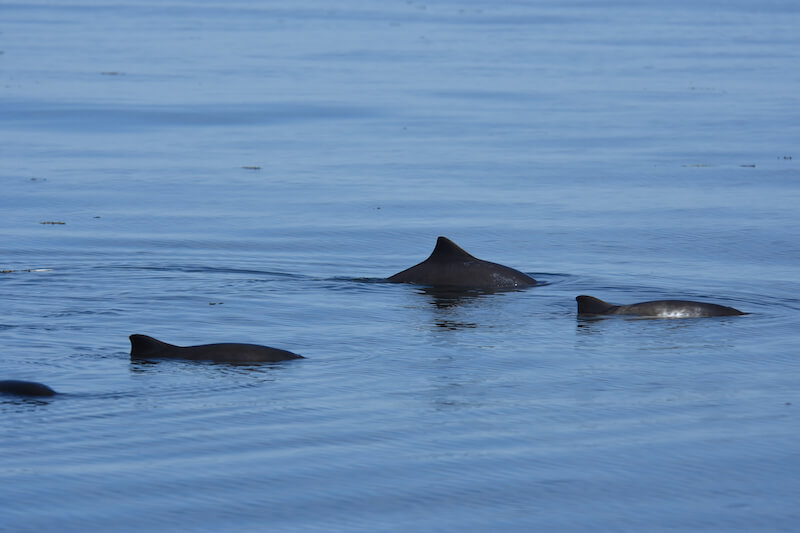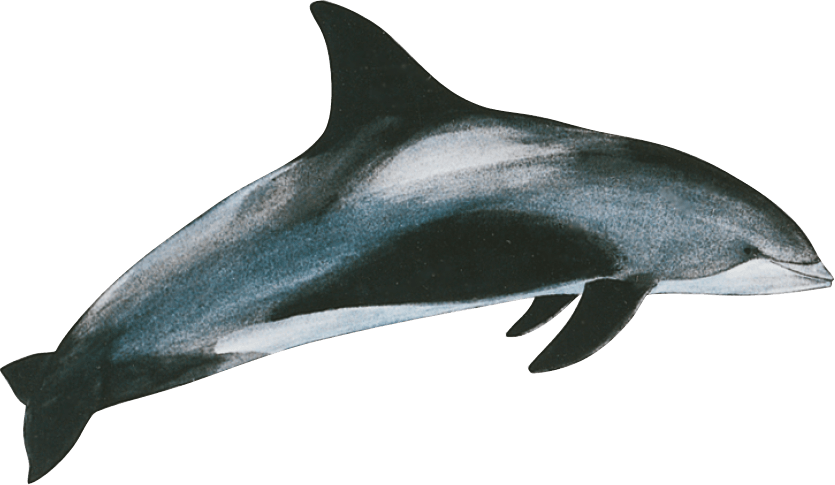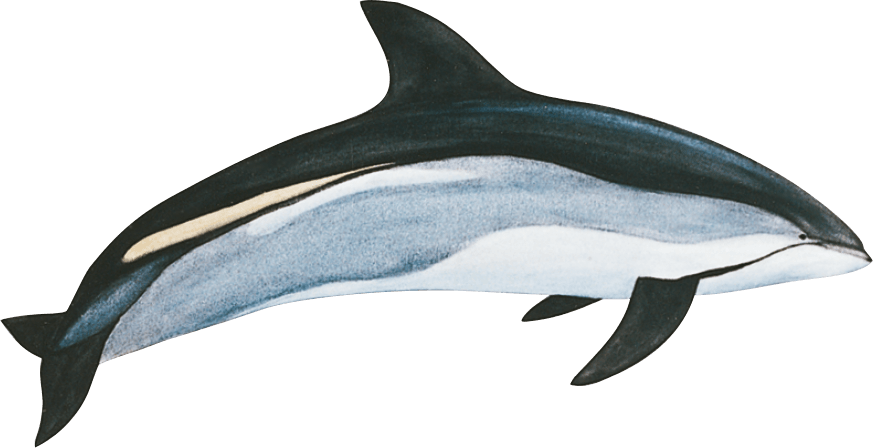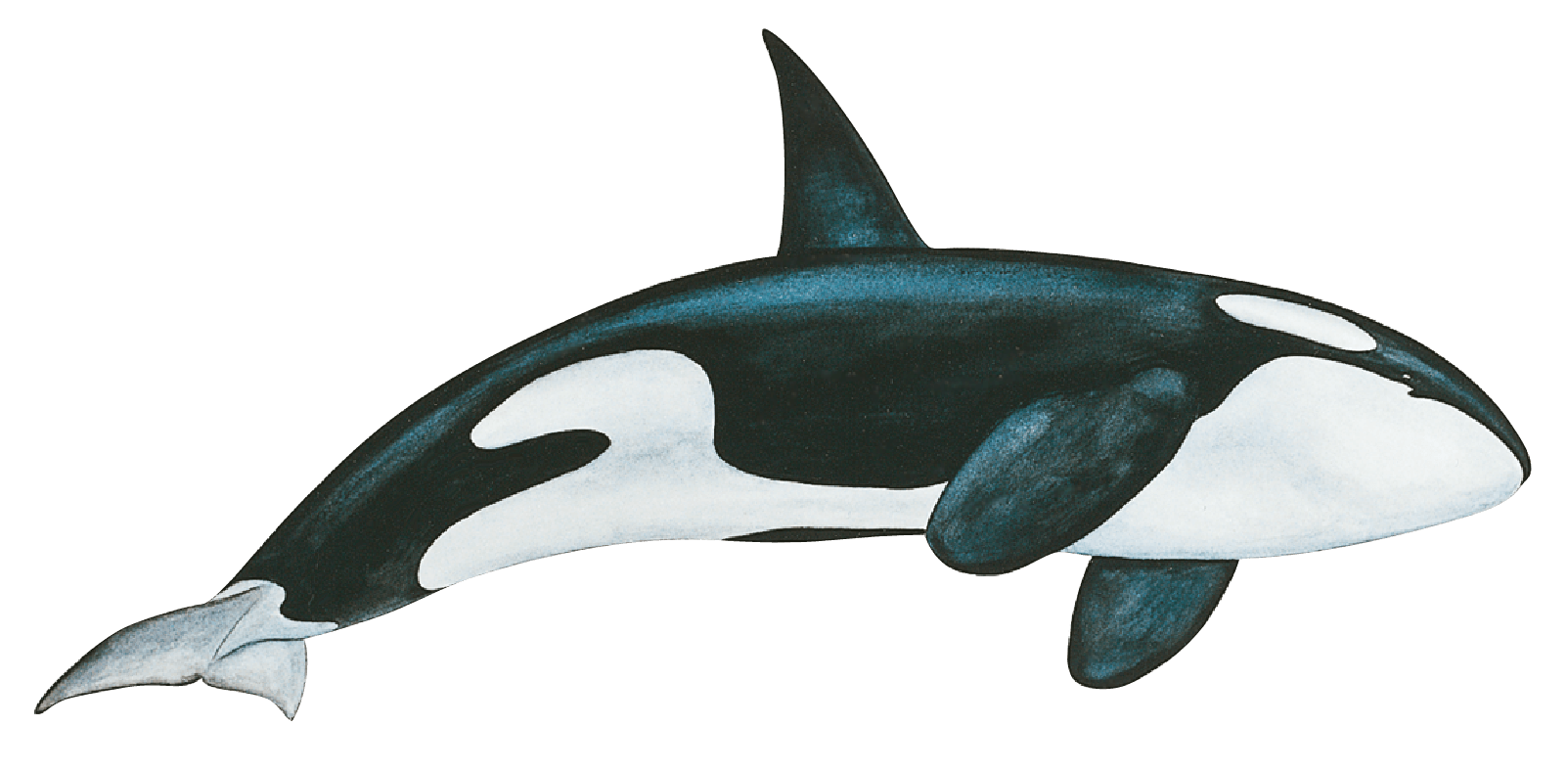Feeding
The harbour porpoise searches for its food in the water column (small schooling fish such as capelin, herring, pollock, mackerel) and on the seabed (squid and crustaceans).
On the surface
Its rapid swimming movement creates the impression that it is rolling on the surface. Its spout (etymologically, “porpoise” means “sea hog”) can only be heard in calm weather. Although a slow swimmer, the harbour porpoise can cover vast distances in a day. Once they surface, porpoises sometimes remain motionless for a few seconds before diving again. They rarely leap out of the water. Harbour porpoises are wary and not usually curious toward boats.
Diving
Their short dives generally do not exceed 5 minutes, reaching depths varying between 15 and 130 m (documented record: 226 m).
Social
Harbour porpoises are gregarious, living in small groups of 2 to 5 individuals that can gather in herds of a few dozen or even a few hundred individuals. These groupings are most certainly linked to feeding. Expansive territories of thousands of square kilometres can be used by harbour porpoises, which are highly mobile.
Vocalization
The porpoise emits repeated clicks but also low-pitched sounds which are believed to be used for communication and echolocation.


